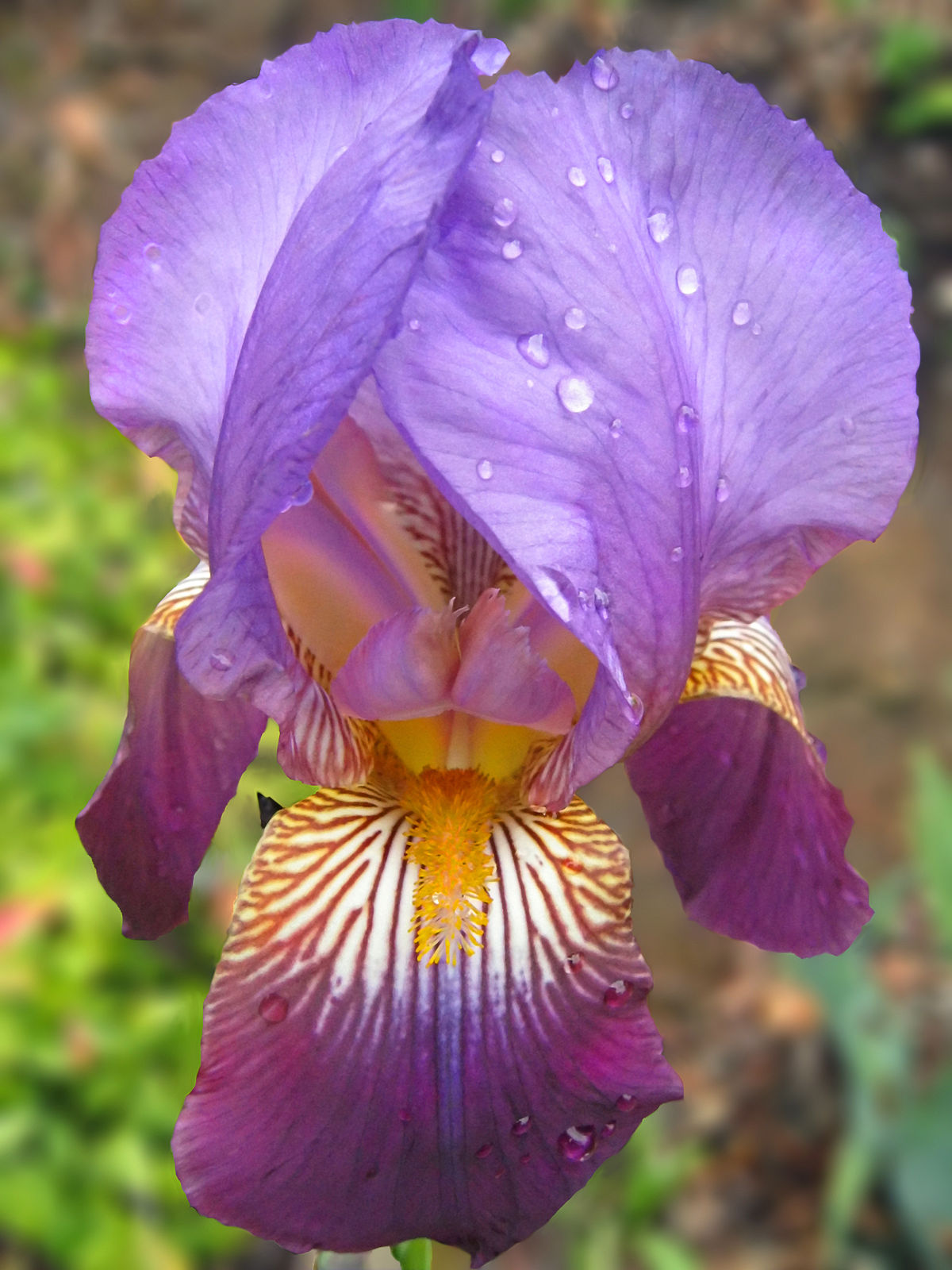Iris Flower – All You Want To Know About Them

Ever thought of making your surrounding cheerful, blooming, and beautiful with just one flower? Yeah, you can think of a rose or jasmine, but don’t you think that these are now too common to be planted? What if a blue blooming flower enhances the beauty of your house? Coming straight to the point, what about having an “Iris Flower”?
Before planting them, you must know about their ideal conditions for them to grow. Also, how to make them sustain in a particular environment and how to plant iris bulbs? In the following article, you will get to know each and everything you want to know about an Iris Flower.
What is an Iris Flower
Well, its name describes it well that it is pure and crystal-like an iris. Therefore, no one can hate the beauty of an iris flower. Bearded iris (Iris germanica) and Siberian iris (Iris sibirica) are two traditional perennial iris types. However, you may also find multiple floral displays when the flower is developing throughout the year.
An iris flower is the subject of poetry, drawing, sketching, and a subject for your portraits. Also, there are a variety of colors in this flower. Therefore, you have a variety of choices apart from the one that blooms in the spring.
If your choice is one of its subtropical varieties, then the iris might develop in just a year. These flowers unsnarl their flowers from the month of springs to the early summers. Dwarf bulb irises are known for their flowering in the early spring.
However, the rest of the iris flower from the month of spring to the previous summers. Common names out of those flowers are Louisiana iris, Japanese iris, bearded iris, Siberian iris, and Dutch iris.
Meaning of an Iris Flower
Its name is derived from the Greek word “Iris.” Which means “Rainbow.” However, it also means “messenger” as per another Greek word “iris.”
Its name rainbow provides people a specific reason to believe upon. Its varieties and colors make it an entire rainbow.
Types of Irises
There are different varieties of iris flowers. However, some of the most famous varieties of all are mentioned below:
Bearded Iris
Bearded iris can also be referred to as a spring lover. This variety of iris flowers develops dazzle tinted flowers. It unfurls between the period of mid-spring and early summers( it depends upon the hybrid you have planted). These include the dwarf varieties of iris plants. Its height can be understood by the term knee-high(full size 40 inches).
Including reblooming iris is a good option because it will extend the season of bearded flowers. Their hardness varies from zone 3 to 9 depends upon the variety you grow. Prefer to purchase the ones (reblooming iris), which can rebloom and survive in the hardiness zone. However, when we talk about reblooming, then patience is a must. It requires a period of at least 1 to 2 years.
Color variety in the bearded iris is quite wide. Blue, red, purple, peach, orange, yellow, white, black, and rose. At the same time, there are also bicolor blends. Bearded iris is known for the good cut flowers. You can create and develop a great cutting garden via the bearded variety of iris.
Siberian Iris
Late spring to early summers is the time for this variety to unwind its flowers. Its unfurling brings out purple and blue colored flowers. Sometimes there are shades of white, pink, red, orange, or yellow colors upon these flowers.
In zone 3 to 9, these plants become somehow hard. Moreover, sometimes they also form clumps of grassy leaves having a height up to two to four feet. Blue Siberian iris flowers make your garden look more exotic.
Japanese Iris
Japanese flowers are well known for their tolerance level and capacity to hold extreme temperatures. Such is the case with the Japanese iris. It has the capability of growing in standing water. Bearing up to 6 inches of standing water during the growing season will be hard for other iris species, but not for the Japanese iris. Its Purple iris flower is also very eye-catchy.
You can grow it along a stream. Downspout’s base is also a favorable location. You can even insert it inside a pot. Whereas the phenomenon of pots only works during the summer or hot season. You have to remove it in winter. Its white and blue color combination is quite popular and exuberant in looking. However, it is also present in a variety of colors.
Dutch Iris
It can be coined as the pride of cutting gardens. Cutting gardens love Dutch iris. Ever saw a rainbow? Yes, that is what its color varieties are, seven colors “VIBGYOR.” Its color variants are also a reason that it is one of the favorite iris. Classic blue Dutch iris is globally famous for its color. White iris flowers found in Dutch are also impressive to watch.
It becomes hardy in zone 5 to 9. It blooms in the month of spring. However, its flowers look like an orchid. Therefore, it is used for bouquets in the garden(lasts for a week). In cold places, the Dutch iris’ bulbs enter inside the ground in the growing season of spring.
African Iris
African iris is one of the iris varieties. It is immensely popular for its drought-tolerant nature. It becomes hardy in zone 8 to 11. It is a beauty to watch out for even in drought. One more specialty of this flower is that it captures the qualities of the other varieties. Florets are planed and quite elegant in looking. Its yellow petals are just a beauty to watch out for.
How to Grow
Planting iris bulbs is not a big task at all. People often plant iris too deep down in the ground that stops its growth. The rhizome of the iris is not like others, which gains nutrition beneath the ground. It loves the sunlight and likes to be on the top of the soil. Therefore, leaving its upper portion exposed onto the surface will help in its growth.
Fertilizing is never a big problem for this plant. Mulch it in the month of winters for once, and it will survive throughout the year.
Division of Iris
You might have a question about how to take care of an iris flower. Iris doesn’t require much maintenance. However, its division every 3-4 years is essential. Hence, it is the only maintenance it requires. A month after the blooming of flowers is the perfect time for you to divide it. You can try digging-and-dividing or thinning old growth. It must be done when the plant is inside the ground.
While growing an iris, the climate can be an issue because it can grow in many extreme temperatures. However, cold winters are extremely necessary for them to gain and store energy. If they don’t have enough energy or no winters, these flowers cannot rebloom.
Seven are the minimum stems that a gardener, owner, or grower looks at. However, it depends upon the variety you have chosen. Some of the irises can even extend their stems to 13 or 15. If your irises are rebloomers, then you have the privilege of enjoying their exotic, cheerful, and wonderful blooming again.
Final Words
Iris is a Greek word, which means rainbow. There are various iris flower colors. They don’t require much care. They are strong and beautiful at the same time. Gifting them to your loved ones can never make the person sad. More details about the flower are provided in the above article.
For more such articles, stay connected to us. And, don’t forget to drop your review in the comment section.






